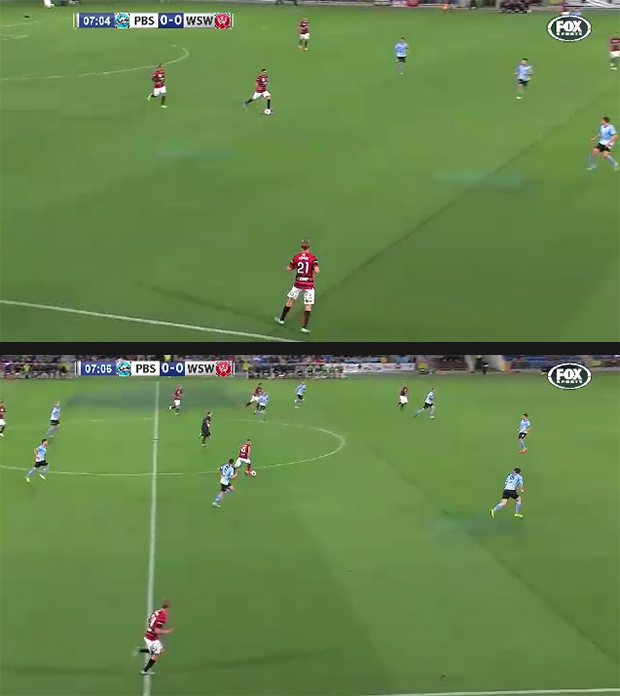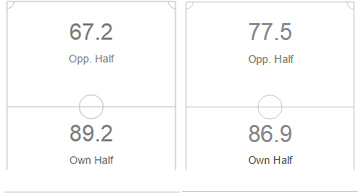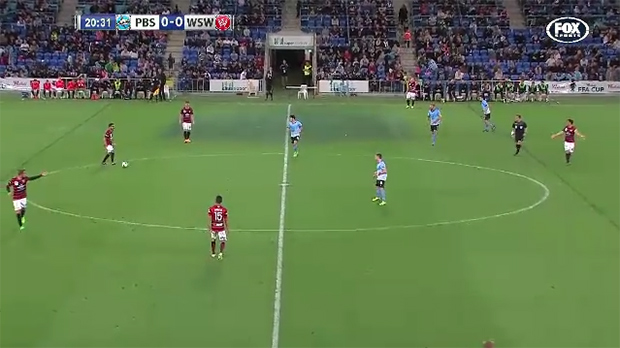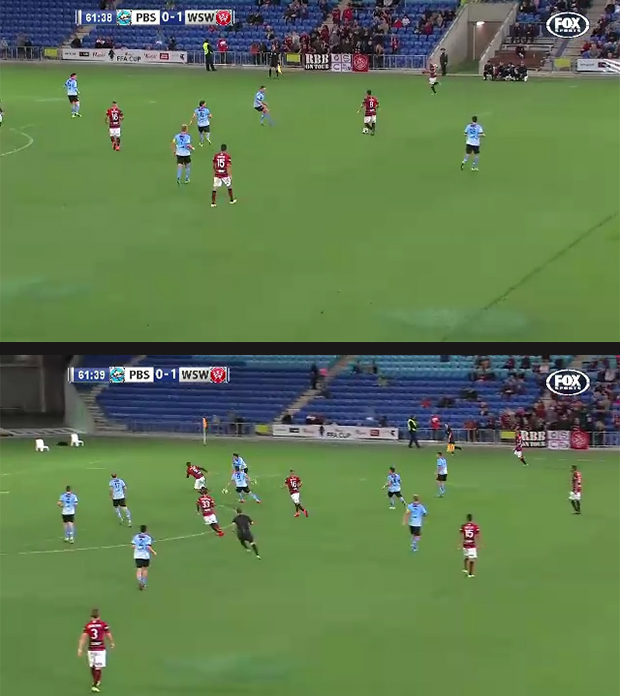It’s easy to romanticise that in the near future with the silky Spanish undercurrent present within the current squad and with a much-talked about stylistic evolution on the cards, the Wanderers will be strutting their own version of tiki-taka.
Whilst a Barcelona-esque makeover is probably fancifully wayward thinking, there were subtle indications and fragments of a possession-based strategy in the 2-0 defeat of Palm Beach on Tuesday that flag the ongoing transformation of Tony Popovic’s system.
One of the most glaring of these was the man of the match performance from Dimas Delgado who gave the base of the midfield a unique Spanish flavour that we’ve not yet tasted from a Wanderers side.
Dimas the conductor
One of the cornerstones of the Wanderers configuration in midfield has been two central, not deep but not-quite-box-to-box midfielders. The combative Mateo Poljak and Iacopo La Rocca brought their separate strengths to the line-up but, in Dimas, Tony Popovic looks to have found himself a true conductor – someone who can control the game primarily through distribution.
Perhaps the most promising aspect of the Spaniard’s performance and key difference between Dimas and the afore-mentioned midfielders was his willingness to play the ball on the ground through the defensive lines when able, prioritizing this over sending the ball sideways or switching the play by spraying long balls to the wing.

As Palmy retreat to get men behind the ball, width provided by Jacob Pepper allows Dimas to slice through the lines and find Sotirio in a central position, eventually resulting in a shot on goal.
This was an accusation often levelled at the likes of La Rocca and Poljak but Delgado is proving less erratic in possession, and as a result, the team is beginning to benefit from more efficient and incisive passing: especially in the opposition half.

WSW passing accuracy by area in 2014/15 (left) compared to the 2015 Westfield FFA Cup so far (right)
Although these numbers are somewhat distorted by virtue of only having played two games so far this season, they strongly hint at the team trying to establish more emphasis on controlled possession, rather than the soak-and-counter style that Wanderers fans have come to know.

Dimas dropped deep to initiate passing moves, often occupying the space between the two central defenders, Aguilar and Hammill. Here both Bridge and Aguilar motion for the ball to be played through the lines – highlighting a fundamental tweak in how the ball is distributed from the back.
Jamieson and Pepper continue to impress
Previously, we noted that Scott Jamieson’s advanced position on the pitch was key to stretching the Brisbane defence and ultimately a major factor in the result in the Round of 32 tie.
Although Palmy were often parked outside their own penalty box for a lot of the game, allowing acres of space for the fullbacks to exploit, there is a growing sense that Tony Popovic has released the shackles and allowed both his fullbacks more leeway to get forward.
As a result, new dimensions of attacking threat are beginning to open up for the Wanderers with Dimas benefitting the most on Tuesday night.

In what was a hyper-crowded final third of the pitch, the supporting run of Jacob Pepper helps Dimas carve out a chance for Federico Piovacarri.
Traditionally unfamiliar phases of play are emerging for the Wanderers, the fact the squad is still in a ‘getting to know you’ stage should offer genuine excitement with little over a month to go before the start of the Hyundai A-League season.
On the back of this performance, Dimas has a firm case for selection in what is a fresh new role for a team that are making exciting progressive tweaks to an already solid foundation.




